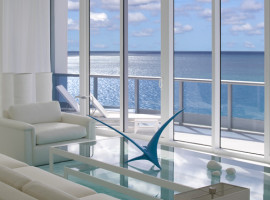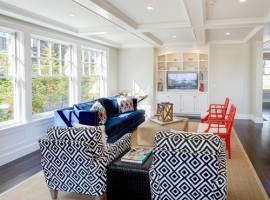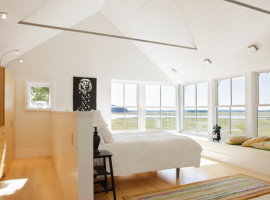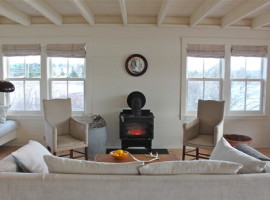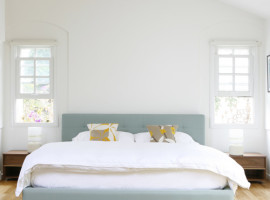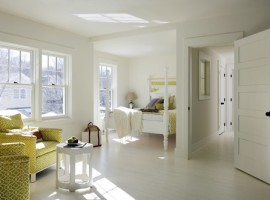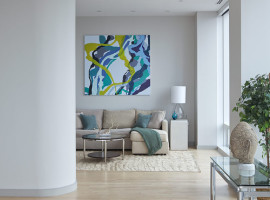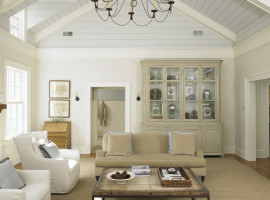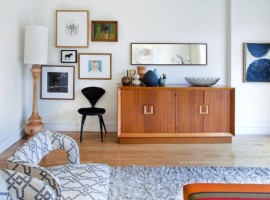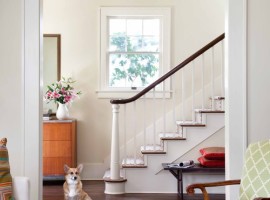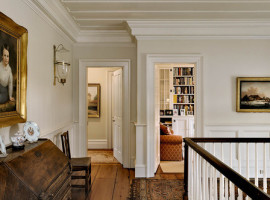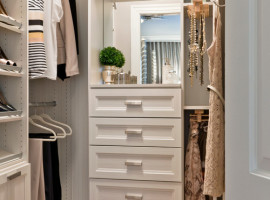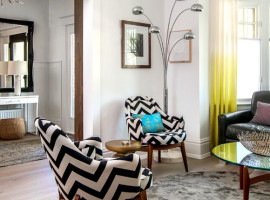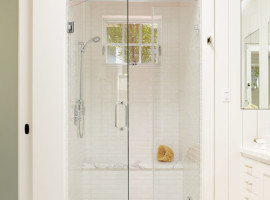There are many ways to give your home’s interior a fresh start than by using the clichéd white paint alternative. This strategy is most often being employed as soon as you move into a new house. There are people who would take to the walls even before they start unpacking.
However, did you know that white has the ability to make one room appear bright and sprightly and the other feel cold and unwelcoming? Just like any other color, white too has related mood, temperature, light, style and reflectivity. Between all these elements, one cannot ignore the importance of maintenance that a white paint requires. However, there is nothing to worry as sometimes, all it takes is a bit of another warm color to tone things down. Here are some things and design ideas that you can consider before you opt for an all white paint.
Be cognizant of your exteriors
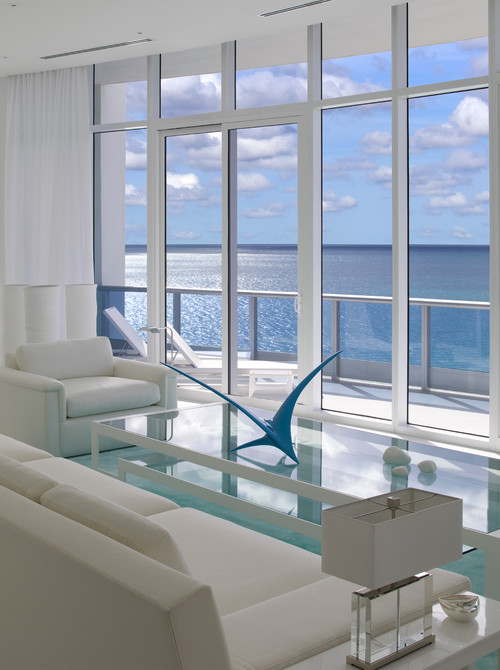
[Image: Interiors & Architecture Photography by Ken Hayden]
If your house has an ocean view, then it is perfect for a summer residence. White walls can augment the merits of living by the sea. The water tends to be closer when the room is all white as it opens up the walls and appear more embracing.
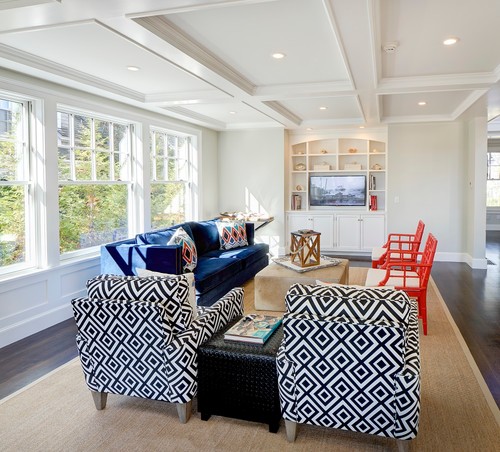
[Image: Sam Sherman Associates, LLC]
When you look outside the window in your room, you should be able to gauge how the flow of sunlight in your room is being impacted by the foliage. It either hinders the light or helps the room by reducing its impact. For example, a deciduous tree planted outside a south facing house in the northern hemisphere will prime your room for warm in winters and shade in summers. This is why you can consider opting for adding other colors like gray-green in your white, also known as dirtying technique that will lower down the impact of sun on the walls during fall season when there are no leaves on the tree. To use pure white would bounce off the light in a winter room when the sunlight is low angled.
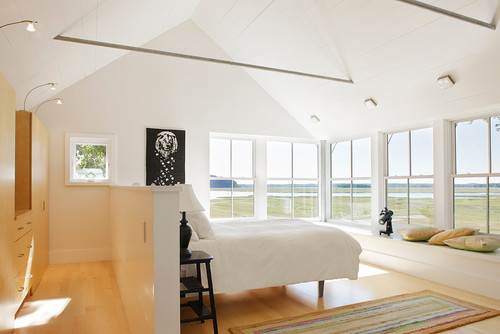
[Image: Estes/Twombly Architects, Inc.]
If you are lucky to have spectacular views outside your home and you have resolved to paint your house white, then you can match the colors of the trim and eliminate the clear markings that define woodwork from the wall paint. This will make the landscape more uninhibited and the open your room to the view outside. This strategy is used to keep the architecture from obstructing the view and can be used with not only white but any other color. However, it works best with white because of its ability to reflect light.
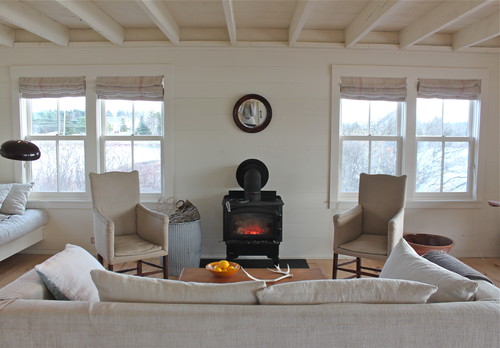
[Image: Justine Hand]
This same concept cannot be applied to homes that are located at the shoreline because the winter view of the ocean can intensify the chilly factor and make the sea appear more inhospitable. People are known to hide the view of the ocean during winters with the help of thick curtains.
The idea of identifying colors by their intensity in terms of coolness and warmth is called transference. White falls within the category of coldest colors when it falls in the range of blue, green and gray, because it is reminiscent of snow.
However, white can still be accommodated in a shore side house, all round the year. Treat your white paint with pigmentation of yellow and orange by bringing the architecture in the forefront and highlighting the coolness outside, all this while keeping the ocean and its view at bay. The vanilla essence of the paint becomes mild during the summers when they bring its tone down and become much more relaxing.
Take the Natural Light into Account
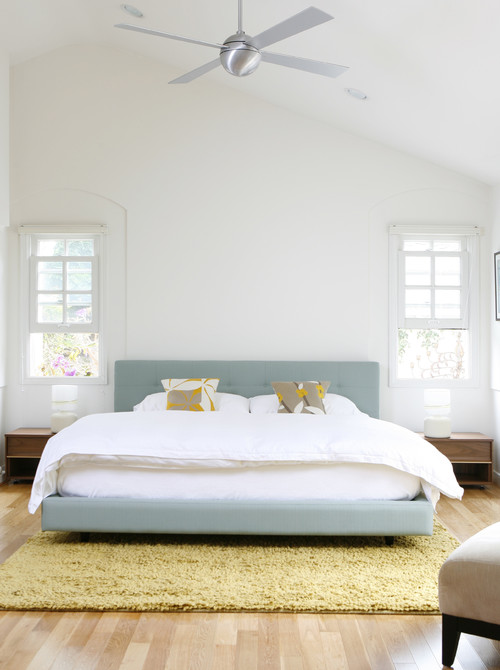
[Image: ras-a, inc.]
White paint used in the room will maximize the light in these rooms and keep it looking cool at the same time.
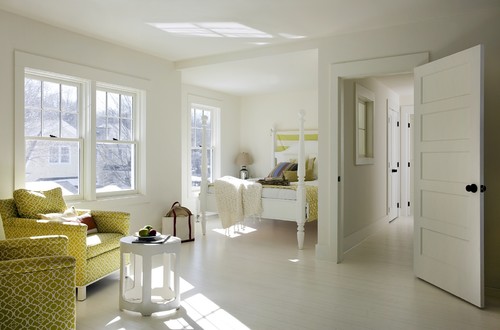
[Image: ZeroEnergy Design]
When you are looking to give your room an all white feel, take its orientation into account. If your room has been positioned away from the afternoon sun, then you will receive a muted blue-gray light which is perfect for bedrooms, especially in summers. It can also be used in a gym or a studio where you need firmness of the design.
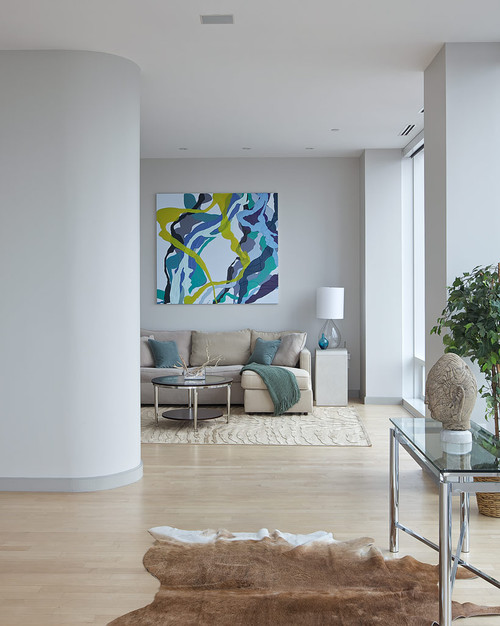
[Image: Marie Burgos Design]
Room facing towards the south in Northern Hemisphere, or vice versa receive maximum sunlight during the day. Regardless of the season, the side of your house facing the sun will get red-yellow light throughout the day.
Such spaces are great candidates for white paints as it helps in cooling down the effect of warm sunlight. The paint, in this case, will be adjusted using the pigmentation technique to cool off the glare. For instance, adding a hint of gray to white paint will soften the ability to reflect the white and will also help calm the room with large windows that get flush of sunlight during the day.
Although, it is important to know that cooling down white is not enough to neutralize the impact of the harsh sun as per the changing seasons. Taking a closer look at your room will reveal that there are certain times of the day when your room receives maximum sunlight.
The idea of pigmentation is to allow the walls to either radiate or cool off the natural sunlight that is coming in naturally. When choosing the off-white color for your room, you need check the underlying hue of each white color option to see what best suits your situation.
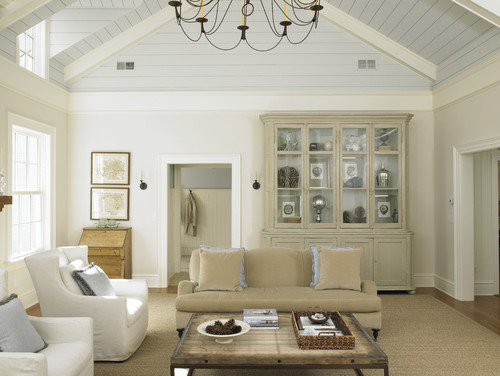
[Image: Huestis Tucker Architects]
The white color, although will not give the same impact in a room that is north facing. White inside the house will resonate with snow outside that can make the room feel visually chilly instead of warm. You can, however, use the tinting technique by mixing a little red, orange or yellow with white or choosing something from the off-white collection for the rooms that are used for socializing.
For this kind of technique to do well, rooms with limited streams of sunlight will benefit the most. By adding pigments of warm color, you can replicate the warmth of the sunshine and increase the throbbing sensation of the color. This will add a pulsating energy to the room which is mandatory for a space that is being utilized for the entertainment of friends and family. Even neuroscience has proven the fact that warm colors have the ability to make us feel warm.
Make it look like a gallery
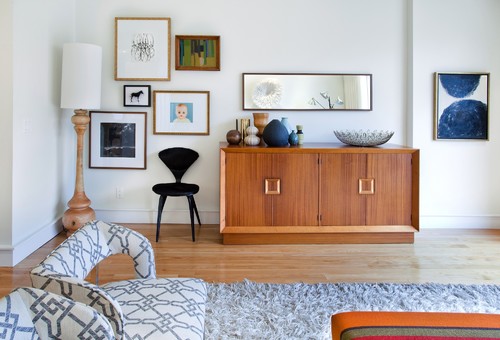
[Image: Shirley Meisels]
The main reason why art galleries use crisp white across the walls and trims is to drop the attention from the architecture and align focus on the artwork. This same method can also be applied at home.
However, for this technique to do its due, it is important have a fine collection of art along with breathtaking views. White will not be able to do much if you are trying to make it stand against family heirlooms and clutter that you can vintage. White can also highlight marks and imperfections in the most brutal fashion the way it helps in highlighting that art. If you cannot promise to maintain the house the way galleries do then perhaps you should steer clear from these options. Families, in this case, often find comfort in using khaki instead of pristine white which is far more relenting with regards to maintenance.
Use the power of white to create illusion of space
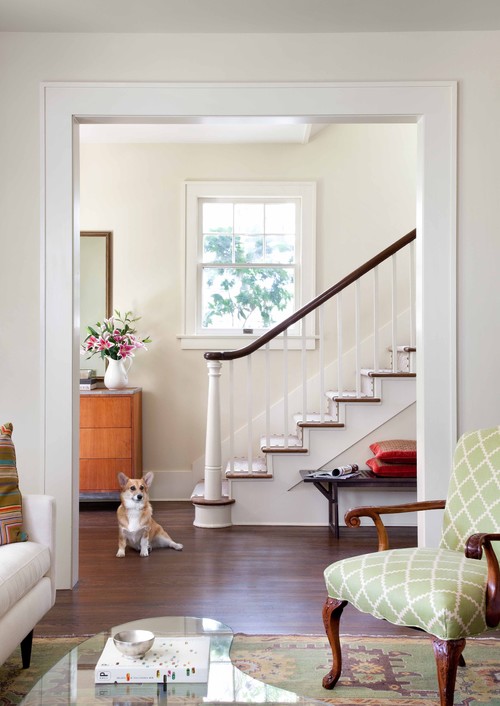
[Image: Tim Cuppett Architects]
Have you ever noticed how rooms painted in white make the room appear larger? It is because light amplifies the size of the room by reflecting off its surface. You can also blur the lines of shadows as well as edges to diminish breaks in the line of sight. When you are choosing the color palette for your home, do remember that cool white is very helpful in opening up spaces and make them look roomier. This is especially true if the rooms are small but receive ample natural light.
However, the trick to maintain the consistency of size from one room to another is to make subtle shifts in shades of white so that the size variation can weaken from room to room. The special perceptions work best when this technique is applied across rooms on the same floor. For instance, you can use deep white if the room size gets bigger to make all the rooms in the house appear visually same when they are not structurally.
The white that you like in the shade card should be used walls of the smallest room. Then use a slightly darker variation of this color on a larger room. The darkness or lightness of white color will impact visual size of each room.
Be mindful of the history
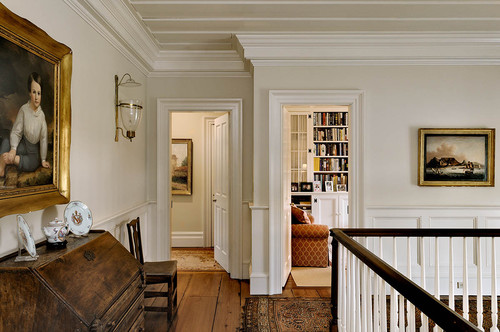
[Image: Crisp Architects]
White is pure, classic and formal in its style offerings. If you have Greek interiors or inspired by history in some way, then white should be white is a must on trims, kitchen walls and bedroom on the third floor. Do not make the mistake of painting everything in white as it will steal the look away.
Selecting colors need more than just whimsical pairings. The contextual need of the color is met with respect for the history that your structure is trying to support. Imagine the error of judgment if you paint your wall trims white and pair it with saturated hue on the wall while the theme of your house is mid-century modern!
All white Closets for Maximum Visibility
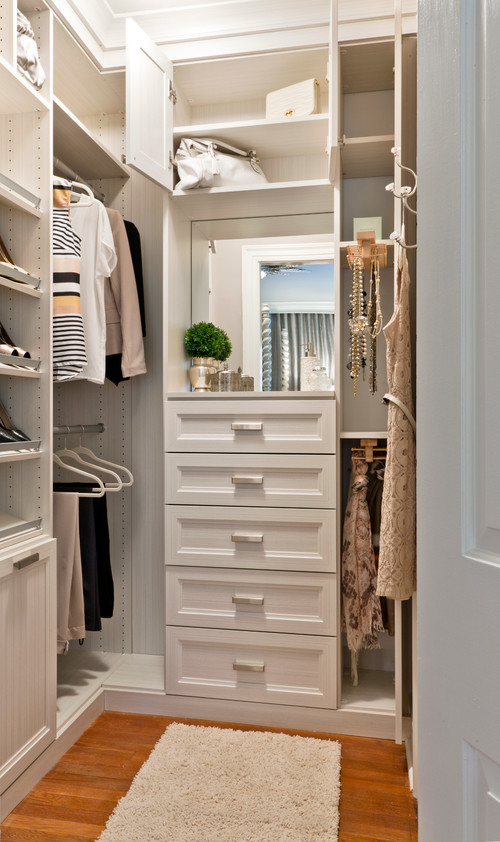
[Image: Deborah Broockerd/ Closet Factory]
Most closets are windowless which makes the flow of natural light out of question. In fact, closet lighting is perhaps the last things on our minds when we are doing home interiors. This leaves your closet poorly lit and hard for you to pick your clothes.
The most effective way to treat these closets is to use reflective paint which optimizes visibility. You can identify its ability to reflect at the local paint store associated with their LRV or Light Reflective Value number. The higher the LRV, the more reflective they are.
White also helps in highlighting the other colors which make it easier for you to sort your color combinations for a perfect outfit.
If the wall color in your bedroom is loud, avoid matching the closet interior color match with it. You can, on the other hand, tint the white paint to match the color of your bedroom wall for a more harmonious look.
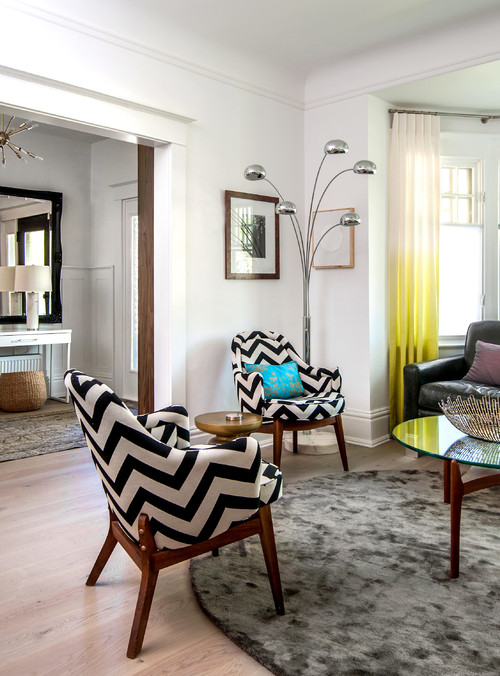
[Image: Stephani Buchman Photography]
White is a very sophisticated color and crisp that can satiate your need for periodic paint jobs for a new look. When you use this simple color across your house, you need to throw caution to the wind and hope for good results.
Break the Sterile Look of White by Adding texture
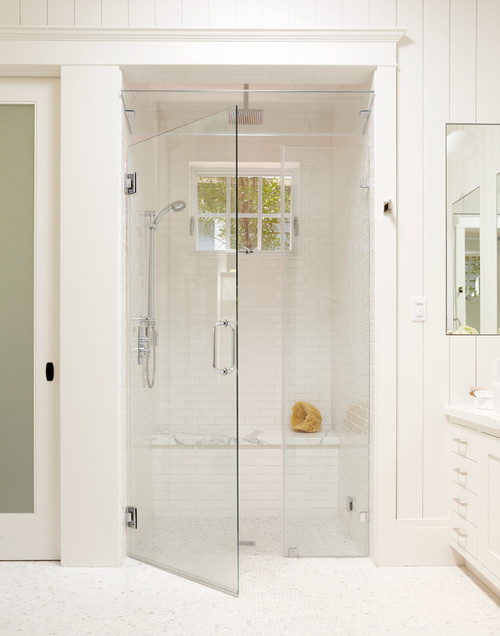
[Image: Rasmussen Construction]
Any room or bathroom is bound to look neat when it is painted all white, including the trims and counter tops, etc. White has been associated with cleanliness across all the cultures and is best used when you are trying to put your home on the market or want to make an impression.
Simply whitewashing a room can have its own set of drawbacks. For instance, stripping down your bathroom to single color will make it look barren and even hopelessly boring. However, a simple addition of a texture can uplift the visual interest and make it look like an interesting feature.
When you need to choose the perfect white for your house, do so by taking design and space into account. Just follow these technical tips and design ideas for a visually sound interior and glorify in the warmth and sharpness of pristine white color!


